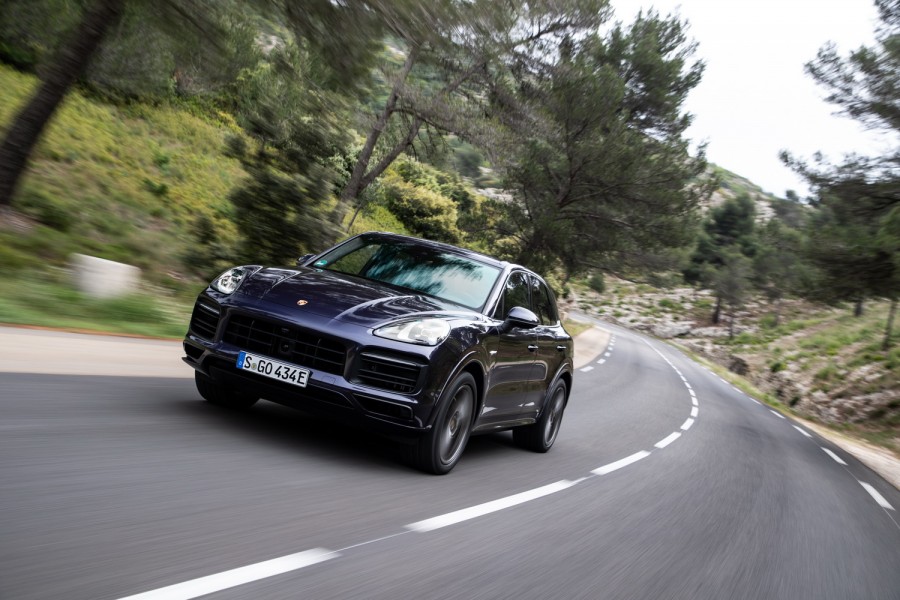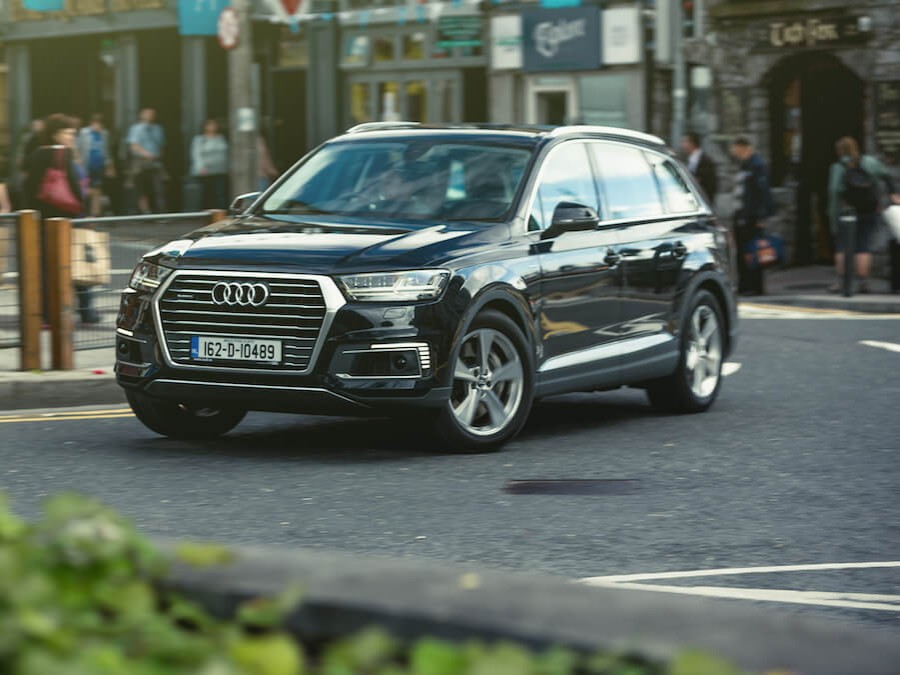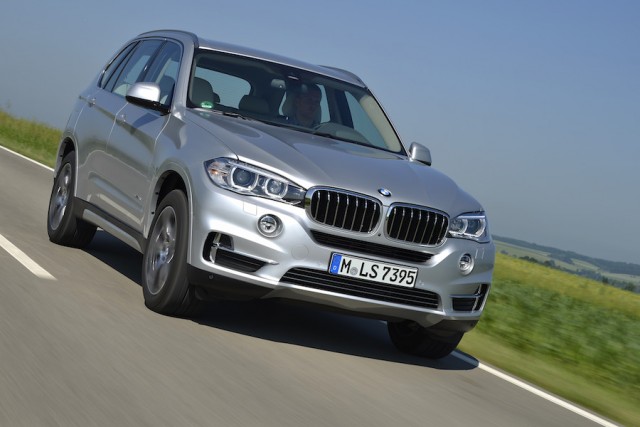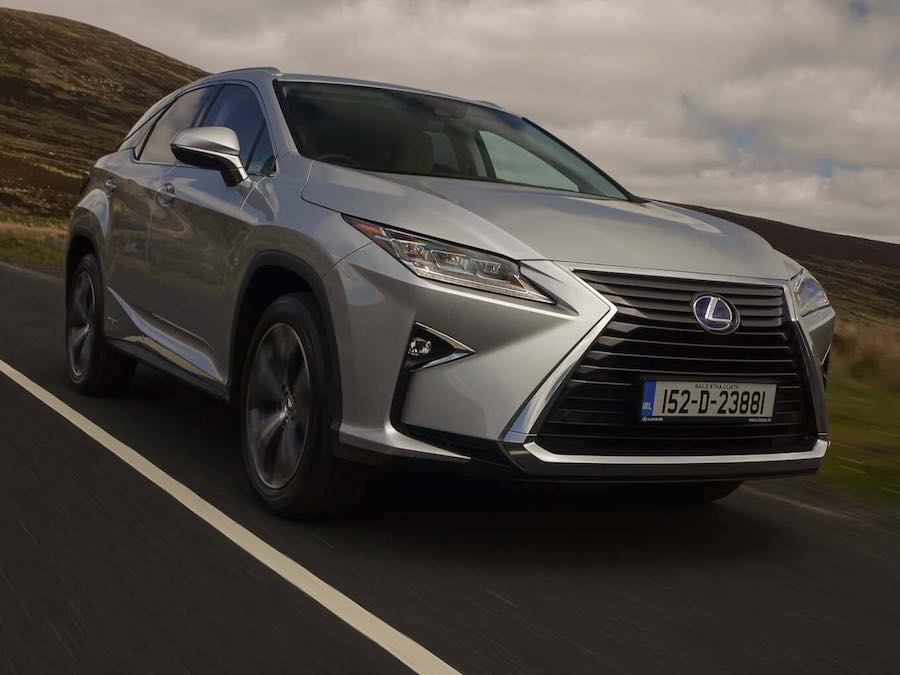In a sign of the times, Porsche has launched the first hybrid derivative of its latest-generation Cayenne SUV, the new E-Hybrid, ahead of the diesel alternative. The latter is in the pipeline, but a significant increase in sales of the hybrid-powered Panamera has lead Porsche to believe that we could see some 60 per cent of all Cayennes fitted with a hybrid powertrain. And while the ultra-low emissions rating helps keep the cost of the hybrid Cayenne down in Ireland, it should be remembered that this big SUV is about performance as much as it is efficiency.
In the metal
As with the rest of the new Porsche Cayenne line-up, the E-Hybrid is incredibly colour and wheel sensitive. White paint, for example, makes it look bulky, but dark metallic hues work well, disguising the size of it and fitting better with the lovely full-width darkened rear lights. The minimum wheel size is 19-inch, but those look tiny in the arches - buyers can opt for massive 22-inch rims for the ultimate in bling, though we'd urge them not to for the negative effect on comfort. It's well worth investing in the Sport Design Package, however. As standard, the green-tinted 'e-hybrid' badges are complemented by acid green brake callipers, though they can be finished in black for more subtlety.
Porsche's interiors have really taken a step up in terms of luxury, quality and technology of late, and the Cayenne's mixes all that with plenty of space in all five seats and, despite the raised seating position, a feel that you're in the car rather than on it. There's a lot going on in terms of switchgear, so it'll take a buyer of the E-Hybrid model in particular a while to find their way around everything (the heated steering wheel button is hidden within the bottom spoke, for example, and the parking sensor buttons are mounted in the ceiling, unusually). Nonetheless, it's all beautifully weighted and it looks great. We particularly like the customisable instrument cluster and large new head-up display. For the E-Hybrid, there are extra displays and buttons to use, plus menu options such as E-Hold and E-Charge.
Driving it
Effortless: that's how I'd describe the performance of the new Porsche Cayenne E-Hybrid. Take a peek at the tech specs over. Then double-take at the power and torque that's available. That's right, up to 462hp and 700Nm. No wonder it can knock out the 0-100km/h sprint in five seconds dead, despite its considerable weight. But the E-Hybrid isn't about embarrassing hot hatches in the traffic lights grand prix (which it can do with ease); it's about having more performance available to the driver than they are ever likely to want or need. That's a luxury and it means the Cayenne E-Hybrid feels like it has performance to spare, despite its supposed focus on efficiency.
How responsive the E-Hybrid feels is down to the driving mode. The standard Sport Chrono package means a rotary control on the steering wheel to choose between E-Power, Hybrid Auto, Sport or Sport Plus settings and they all have a pronounced effect on the car's behaviour. E-Power is the default mode, maximising electric running. The motor puts out 136hp and 400Nm of torque, allowing the Cayenne reach speeds of up to 135km/h and a theoretical electric range of up to 44 kilometres. There's even an 'E-Launch' function for rapid getaways in this mode. In comparison to the previous Cayenne S E-Hybrid, the new car's battery is no heavier, but it has 30 per cent more energy capacity, along with other detail improvements to enhance the ownership experience. It's mounted above the rear axle, reducing practicality a little.
If the battery charge drops below a certain level, the Hybrid Auto mode is selected, and this automatically juggles using electric and/or petrol power. The latter, incidentally, comes from the same smooth turbocharged 3.0-litre V6 petrol engine as used in the entry-level Cayenne, and it sounds lovely at low to medium revs, if less cultured when you plant the throttle and use all the available thrust.
For keener driving, there's the Sport and Sport Plus modes, now with a boost strategy borrowed from the Porsche 918 Spyder hybrid supercar. In both settings, the engine is running always and the battery is kept charged so that full performance is on tap. The transmission, suspension, steering and throttle response are also adjusted to suit and Sport Plus feels a little over the top for the likely use of the car. As does the Sport Response button, which primes the powertrain for maximum acceleration for a period of 20 seconds, regardless of which driving mode you're in. This gets the car ready for fast overtaking, but given the level of performance always available, it's quite superfluous.
The chassis itself remains impressive, mixing comfort, refinement and rock-solid stability with surprising agility in the corners. Obviously, the laws of physics mean that this Cayenne won't quite keep a Porsche 911 in sight, but it corners better and with more zeal than you'd expect, even if there's precious little communication through the otherwise lovely steering wheel. One tiny fly in the Cayenne's dynamic ointment is brake pedal feel at low speeds. It's quite difficult to smoothly brake to a stop around town, as you can feel (and hear) the electrical systems at work. There's no such issue at higher speeds on the open road, thankfully.
What you get for your money
Thanks to the low emissions rating, the Cayenne E-Hybrid comes in at a relatively trim €88,901 in Ireland, including the VRT rebate and private SEAI grant as it's a plug-in hybrid electric vehicle. It means low annual road tax, too, though buyers should ignore the official fuel consumption figure unless they're going to charge up the car from an external source very regularly, maximising the electric running time. For the record, in our day with the car, we covered some 350 kilometres of mixed roads, sometimes pushing on, mostly not, and averaged 10.1 litres/100km (about 28mpg). For something with this level of performance, that's not awful, but neither is it any more efficient than a big-engined diesel.
In terms of equipment, the E-Hybrid model is comprehensively well-equipped, featuring the usual Cayenne stuff such as leather upholstery, climate control, satnav, etc. Porsche Active Suspension Management (PASM - adaptive damping) and the Sport Chrono package are also standard, while the introduction of this model coincides with the launch of plenty of new options for the Cayenne range as a whole.
Summary
You can't argue with the numbers: the Porsche Cayenne E-Hybrid is a technical marvel. However, like all plug-in hybrids, to get anywhere near its official fuel consumption, its owner will have to charge the battery pack regularly, meaning it's best kept for urban use. That is seemingly at odds with its massive power output and surprising willingness in the bends, but I guess it's future-proofed in that it can drive in town with zero local emissions, while still allowing long distances to be covered - and even a little Porsche driving fun. Can it usurp the diesel Cayenne for European affections?

















































